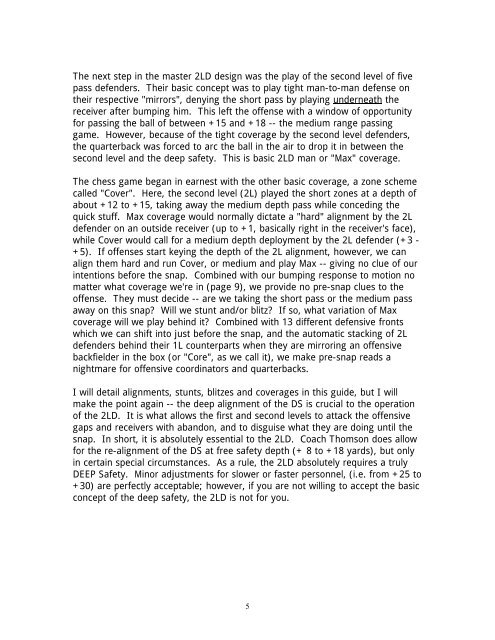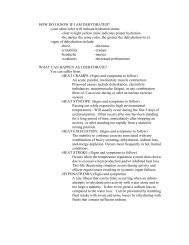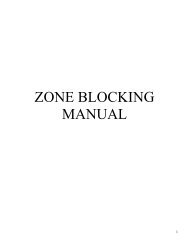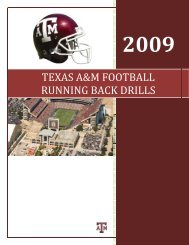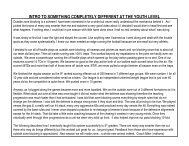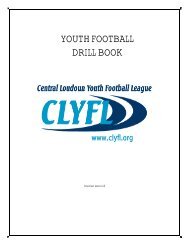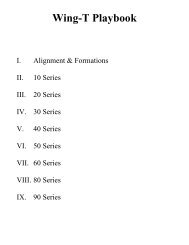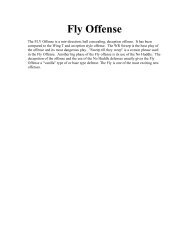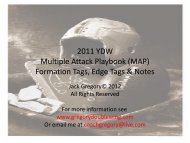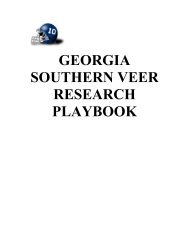You also want an ePaper? Increase the reach of your titles
YUMPU automatically turns print PDFs into web optimized ePapers that Google loves.
The next step in the master <strong>2LD</strong> design was the play of the second level of fivepass defenders. Their basic concept was to play tight man-to-man defense ontheir respective "mirrors", denying the short pass by playing underneath thereceiver after bumping him. This left the offense with a window of opportunityfor passing the ball of between +15 and +18 -- the medium range passinggame. However, because of the tight coverage by the second level defenders,the quarterback was forced to arc the ball in the air to drop it in between thesecond level and the deep safety. This is basic <strong>2LD</strong> man or "Max" coverage.The chess game began in earnest with the other basic coverage, a zone schemecalled "Cover". Here, the second level (2L) played the short zones at a depth ofabout +12 to +15, taking away the medium depth pass while conceding thequick stuff. Max coverage would normally dictate a "hard" alignment by the 2Ldefender on an outside receiver (up to +1, basically right in the receiver's face),while Cover would call for a medium depth deployment by the 2L defender (+3 -+5). If offenses start keying the depth of the 2L alignment, however, we canalign them hard and run Cover, or medium and play Max -- giving no clue of ourintentions before the snap. Combined with our bumping response to motion nomatter what coverage we're in (page 9), we provide no pre-snap clues to theoffense. They must decide -- are we taking the short pass or the medium passaway on this snap? Will we stunt and/or blitz? If so, what variation of Maxcoverage will we play behind it? Combined with 13 different defensive frontswhich we can shift into just before the snap, and the automatic stacking of 2Ldefenders behind their 1L counterparts when they are mirroring an offensivebackfielder in the box (or "Core", as we call it), we make pre-snap reads anightmare for offensive coordinators and quarterbacks.I will detail alignments, stunts, blitzes and coverages in this guide, but I willmake the point again -- the deep alignment of the DS is crucial to the operationof the <strong>2LD</strong>. It is what allows the first and second levels to attack the offensivegaps and receivers with abandon, and to disguise what they are doing until thesnap. In short, it is absolutely essential to the <strong>2LD</strong>. Coach Thomson does allowfor the re-alignment of the DS at free safety depth (+ 8 to +18 yards), but onlyin certain special circumstances. As a rule, the <strong>2LD</strong> absolutely requires a trulyDEEP Safety. Minor adjustments for slower or faster personnel, (i.e. from +25 to+30) are perfectly acceptable; however, if you are not willing to accept the basicconcept of the deep safety, the <strong>2LD</strong> is not for you.5


